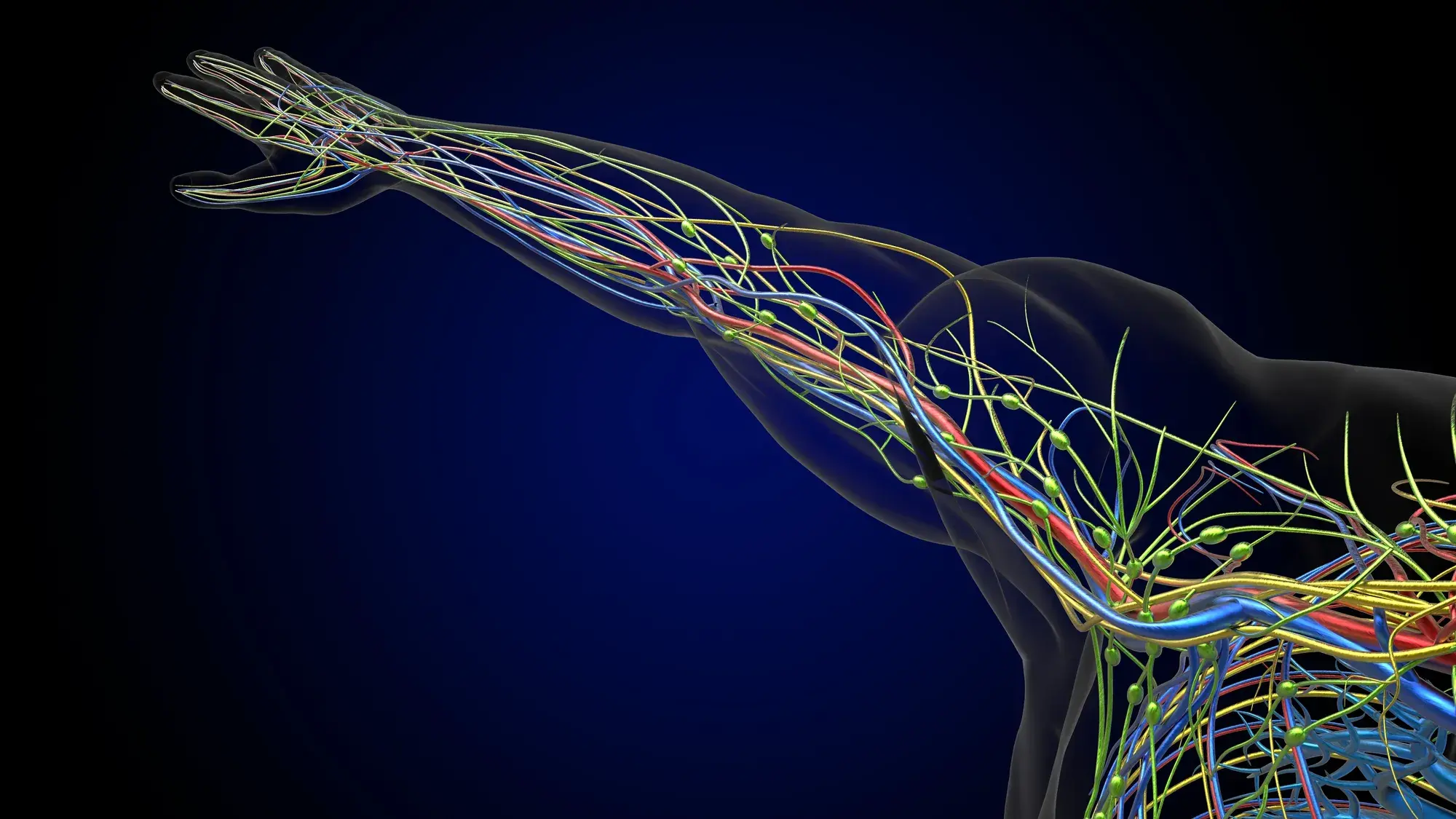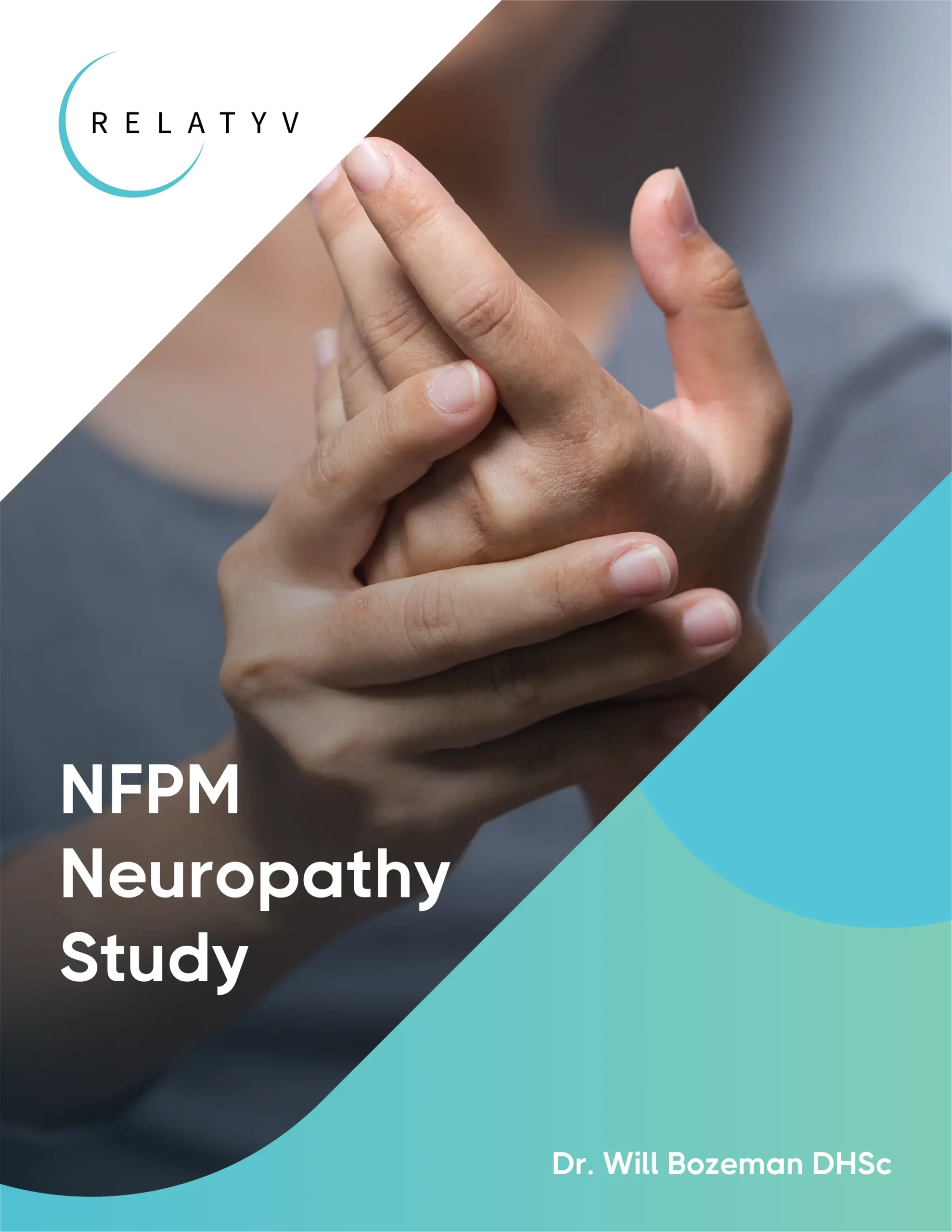Radial tunnel syndrome (RTS) is a relatively uncommon condition that affects the forearm and wrist. The annual incident rate of RTS is estimated to be only 0.03%. However, RTS can significantly impact a person’s daily life by limiting their ability to perform simple tasks such as gripping objects, typing, and even writing. It can also cause significant discomfort and affect one’s quality of life if left untreated. Fortunately, at Neuragenex Neurofunctional Pain Management, we offer an effective pain management solution to help those suffering from RTS.
What Is Radial Tunnel Syndrome?
RTS is a condition that affects the radial nerve, which runs from the neck down to the hand. The radial nerve controls movements of the triceps muscle in the upper arm. Also, it helps with sensation on the back of the hand.
When this nerve is irritated or becomes compressed, it can cause weakness, numbness, and pain in certain areas of the arm and hand. RTS is often compared to “tennis elbow” because it can cause similar symptoms, although it affects a different part of the arm.
Where Is The Radial Tunnel Located?
The radial tunnel is located on the lateral (outer) side of the elbow, between the humerus bone and the supinator muscle. It comprises various structures, including the radial nerve, posterior interosseous nerve, brachioradialis muscle, and extensor carpi radialis longus muscle.
The supinator muscle wraps around the upper part of the radius bone. It plays a role in supination (rotation of the forearm). The extensor carpi radialis longus muscle helps with wrist extension, while the brachioradialis muscle flexes the elbow. All of these structures interact with the radial nerve within the radial tunnel.

Common Symptoms Associated With Radial Tunnel Syndrome
Because the radial nerve controls both muscle movements and sensation, RTS can cause various symptoms. These may include:
- Aching or burning pain in the forearm: RTS pain is typically felt in the outer part of the forearm, closest to the elbow. This can sometimes radiate down to the wrist and hand.
- Aggravation with certain movements: Activities that involve repetitive wrist movements or gripping can exacerbate RTS pain. This includes tasks like typing, using a screwdriver, or playing sports such as tennis.
- Painful grip: People with RTS may experience pain when trying to grip objects, making it difficult to perform simple everyday tasks, such as holding a coffee cup or a phone.
Stiffness and Limited Range of Motion
Although it’s normal for people to experience some level of stiffness or reduced range of motion as they age, it may be a sign of an underlying health condition if the issue persists or is causing significant discomfort. When the range of motion of a joint...
Hand Weakness
Experiencing persistent weakness in your hands can significantly impact your quality of life. If you have weakness in your hands, it can be difficult to perform everyday tasks. It can be especially problematic if you use your hands to perform your job. If you...
Numbness And Tingling In Fingers
Experiencing numbness and tingling in the fingers can be quite unsettling. It can feel like a strange sensation that starts with a subtle loss of feeling, followed by a tingling or “pins and needles” effect that can range from mild to intense. Over time,...
Tingling Sensation in Hands and Feet
Paresthesia is the medical term to describe a tingling sensation in parts of the body, most notably in the hands or feet. It can manifest as a prickling feeling, numbness, burning, and shooting pain. Although these sensations are usually harmless, they can...
What Are The Most Probable Causes Of The Condition?
Knowing the potential causes of radial tunnel syndrome can help you prevent future occurrences and choose the most effective treatment options. The most common causes of RTS include:
Repetitive Wrist And Forearm Movements
Repetitive wrist and forearm movements, especially those involving twisting or gripping, can strain the muscles and tendons in the arm. This strain can lead to inflammation and compression of the radial nerve within the tunnel. Activities that may contribute to RTS in this way include playing certain sports, using power tools, or typing on a computer for extended periods.
Trauma Or Injury
A fall, impact, or other direct trauma to the elbow can cause damage to the structures within the radial tunnel and lead to RTS. This may include fractures or dislocations of the humerus bone or injuries to surrounding muscles and tendons. There are countless ways that someone can experience physical trauma to the elbow, so it’s essential to be aware of potential harm when participating in risky activities. For example, falling off a bike or being in a car accident could lead to damage in the radial tunnel.
Underlying Medical Conditions
Some underlying conditions can increase your risk of developing radial tunnel syndrome. These include the following:
- Ligament injuries: Injuries to the ligaments in the elbow, such as sprains or tears, can put pressure on the radial nerve, thereby causing compression.
- Tumors or ganglion cysts: Tumors and ganglion cysts are abnormal growths that can sometimes develop within the elbow joint or along the path of the radial nerve. These masses can compress the nerve and cause symptoms if they grow large enough.
- Diabetes: There is a higher risk of developing nerve damage, including compression of the radial nerve, if you have diabetes. This is because the small blood vessels that feed and nourish your nerves are more prone to damage if you have high blood sugar levels.
- Osteoarthritis: Osteoarthritis is a degenerative joint disease that can affect the elbow joint. The condition causes cartilage to wear away. This, in turn, results in your bones beginning to rub against each other, which can lead to the development of bone spurs. Bone spurs can compress surrounding structures such as muscles and nerves.
- Gout: Gout is an inflammatory arthritis that can cause swelling and joint pain. It tends to affect the big toe but can also develop in other joints, such as the elbow. Excess uric acid crystals can build up and create deposits in the joint and may compress nerves.
- Rheumatoid arthritis: Rheumatoid arthritis is an autoimmune disorder known for causing joint inflammation. This inflammation can lead to swelling and stiffness, which can compress nerves and cause symptoms.
When To Seek Medical Attention
You should seek medical attention if your symptoms worsen or start affecting daily activities. A doctor will physically examine your arm and order diagnostic tests to assess the potential cause of your symptoms. These diagnostic tests can include imaging studies such as X-rays, MRI, or nerve conduction tests. It is also vital to seek medical attention if there are any signs of infection around the elbow joint, such as redness, warmth, or swelling.
How Is Radial Tunnel Pain Diagnosed And Evaluated?
To diagnose radial tunnel syndrome, a doctor will typically perform the following steps:
- Evaluation of medical history: The doctor will inquire about any previous injuries or medical conditions that may be contributing to the symptoms.
- Clinical examination: A physical exam will be conducted to check for any tenderness or weakness in the wrist and hand, as well as any decreased range of motion.
- Nerve conduction study: This test involves measuring the speed and strength of electrical signals sent through the nerves in the arm. It can help determine if there is any nerve damage or compression.
- Imaging tests: X-rays, MRI, or ultrasound may be ordered to visualize the structures in and around the elbow joint and identify any potential causes of nerve compression.
- MRI: An MRI will provide the doctor with images of the soft tissues in and around the elbow joint, making it useful for detecting abnormalities such as cysts or tumors.
- Ultrasound: Ultrasound uses high-frequency sound waves to develop images of the body’s structures. It can help identify any swelling or inflammation around the radial nerve.
Differential Diagnosis Of Radial Tunnel Pain
A differential diagnosis is a list of possible conditions that could be causing the symptoms someone is experiencing. Several conditions can cause symptoms similar to radial tunnel syndrome, which is why it’s essential to rule out other potential causes. Some possible differential diagnoses for RTS may include:
- Cubital tunnel syndrome: Cubital tunnel syndrome is when the ulnar nerve is compressed at your elbow. This condition can lead to feelings of numbness and pain in your hand and fingers. It can sometimes be mistaken for RTS, but the area of compression is different.
- Tennis elbow: Tennis elbow is when inflammation and pain develop in the tendons on the outside of the elbow. It can cause similar symptoms to RTS, but the underlying cause is different.
- Wrist tendinitis: This refers to inflammation and irritation of the wrist tendons. This can cause hand pain and weakness. Wrist tendinitis can sometimes be mistaken for RTS because it may also involve symptoms in the hand and fingers.
- Thoracic outlet syndrome: This condition involves compression of nerves or blood vessels in the space between the collarbone and first rib, causing pain and tingling sensations in the arm. It can be misdiagnosed as RTS if the symptoms primarily affect the forearm and hand.
What Treatment Options Are Available?
Traditional treatment for radial tunnel syndrome may include a combination of conservative measures and more invasive procedures. Conventional doctors will recommend the most appropriate treatment based on their diagnosis of the underlying cause of RTS, as well as the severity and duration of symptoms.
Conservative Measures & Medications
The following conservative measures are often used to manage RTS symptoms:
- Rest: Simply taking a break from physical activities that strain the forearm muscles and tendons can help alleviate symptoms by allowing the affected area to heal.
- Ergonomic modifications: Making changes to work or home environments, such as using a wrist brace or modifying computer equipment, can help reduce strain on the arm and alleviate symptoms.
- Physical therapy: A physical therapist can prescribe exercises and stretches tailored to your condition that will help improve your arm’s flexibility and strength. Doing so can relieve pressure on the radial nerve and improve symptoms.
- NSAIDs: NSAIDs, or non-steroidal anti-inflammatory drugs, are commonly recommended to provide temporary relief from pain and inflammation associated with RTS.
- Oral steroids: In some cases, a doctor may prescribe oral steroids to reduce inflammation and alleviate symptoms.
- Topical analgesics: Creams or patches containing analgesic medication may also provide short-term pain relief.
Surgery
In severe cases of RTS or when conservative measures have been unsuccessful, surgery may be recommended. The type of surgical procedure that is recommended will depend on the underlying cause of RTS. For example, if there is a cyst or tumor causing compression of the radial nerve, it may need to be removed surgically. Surgery can also involve releasing tight structures or cutting muscles to relieve pressure on the nerve.
All surgical procedures involve potential risks and complications that should be considered. For example, surgery can sometimes lead to further nerve damage or infection. That being said, the following procedures are commonly used to treat RTS:
- Release surgery: Release surgery involves releasing any tight structures or cutting muscles to relieve pressure on the radial nerve. It is often performed arthroscopically, using small incisions and specialized tools.
- Decompression surgery: If a cyst or tumor is causing compression on the radial nerve, surgery may be required to remove it and relieve pressure on the nerve. Decompression surgery can also remove any scar tissue or adhesions that may be compressing the nerve.
- Nerve transposition: In cases where the nerve is severely compressed and damaged, moving the nerve to a different location in the arm may be necessary. This procedure is known as a nerve transposition.
The Neuragenex Neurofunctional Pain Management Approach To Radial Tunnel Syndrome Pain
We focus on a neurofunctional approach to pain management. This approach involves identifying and addressing the underlying neurological cause of your radial tunnel syndrome pain instead of just treating symptoms. Additionally, our protocol uses a whole-person approach that involves a combination of drug-free, non-opioid, non-chiropractic, non-surgical, and non-invasive treatment modalities that include the following:
Seek Out Effective Radial Tunnel Pain Relief
Radial tunnel syndrome can be a debilitating and frustrating condition, but it is important to remember that there are effective treatment options available to help manage your pain. A correct diagnosis is vital to determine the best course of action for managing RTS pain.
We offer Neurofunctional Pain Management, a unique approach to pain management that takes into account the neurological factors contributing to your symptoms. Using our drug-free and non-invasive treatment methods, we can help you manage your long-term pain and improve your overall well-being. Contact us to seek out effective relief for your radial tunnel syndrome pain and take back control of your life today.
Say goodbye to wrist pain.



